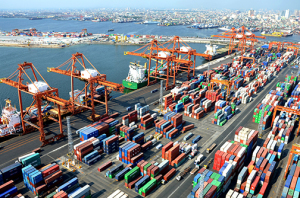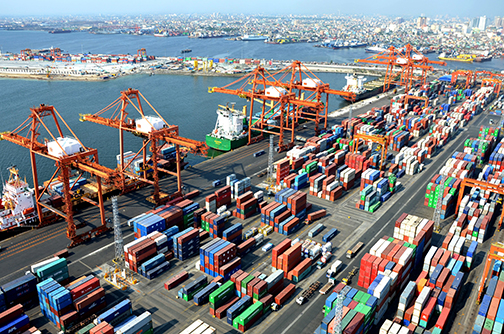
Manila International Container Terminal’s (MICT) Berth 7 will be open to receive empty containers by October 31, a development that will help alleviate congestion at off-dock container yards, said Christian Gonzalez, vice president and head of Asia Region of MICT operator International Container Terminal Services, Inc. (ICTSI).
Gonzalez said Berth 7 is targeted to handle 20,000 twenty-foot equivalent units (TEU) a month.
“We will go (shipping) line by (shipping) line, depending on who has the highest inventory, allow them at will and without restriction, to put empties into that facility and schedule ship out,” Gonzalez explained at last week’s Senate hearing on the port congestion.
The port executive said the scheme’s “only restriction” is that delivery of empty containers to MICT per shipping line “must be spread over seven days so we don’t have a bad effect on the traffic flow outside of the ports.”
As of October 16, Gonzalez said there were 56,100 empty containers sitting in container yards and warehouses of consignees. He said this backlog can be transferred for load out at Berth 7 to reduce inventory of yards.
Empty containers piled up when the city of Manila imposed a truck ban in February. In the first few weeks of its implementation, the ban heavily restricted the return of empty containers to the ports during the day while laden cargoes kept arriving, causing a disruption in the logistics chain.
It does not help that the Philippines has a container imbalance being an importing economy, where out of four import containers coming in, only one is shipped out loaded with export goods. Until they are repositioned, the three other empty containers sit in container yards, leading to the massive inventory of empties.
Post truck ban
Meanwhile, MICT and Manila South Harbor saw “significant” improvements a month after the Manila truck ban was lifted on September 13.
Sean Perez, vice president for commercial and marketing of Asian Terminals Inc, operator of the South Harbor, said the terminal had only one ship at anchorage waiting to berth as of October 16. Utilization of South Harbor’s laden yard is down to 86% while load out of empty containers improved 36%.
Truck movement, on the other hand, has gone up to 40%, he added.
In a separate interview with PortCalls after the Senate hearing, Perez said daily truck movement increased to 1,600 TEUs from 1,112 previously.
As for MICT, Gonzalez said it recorded, in the week of Sept 6, the highest volume of empty containers so far, “so the empties are now starting to come in to the terminal.”
The waiting time for vessel berthing has also gone down to half since lifting of the Manila truck ban, though “there are still a lot of them”, Gonzalez acknowledged.
Recent bad weather not only in the Philippines but also in Japan also caused some slowdown, disrupting schedule of ships on the North Asia route.
The problem now is the influx of cargoes for the holiday season, as well as the backlog held up in foreign ports, Gonzalez said.
When PortCalls asked for his comments on the call of foreign chambers for government to put in more drastic measures to ensure the easing of port congestion, Gonzalez in an email said there had been improvements, “but I agree we all need to keep pushing.”
He noted that “If we get more efforts from importers (to pull out cargoes) on the weekends then we can continue to see sustained improvements even with more and more cargo coming through.”
Meanwhile, several projects aimed at automating return of empty containers have either started or are being worked out by the private sector. – Roumina Pablo





